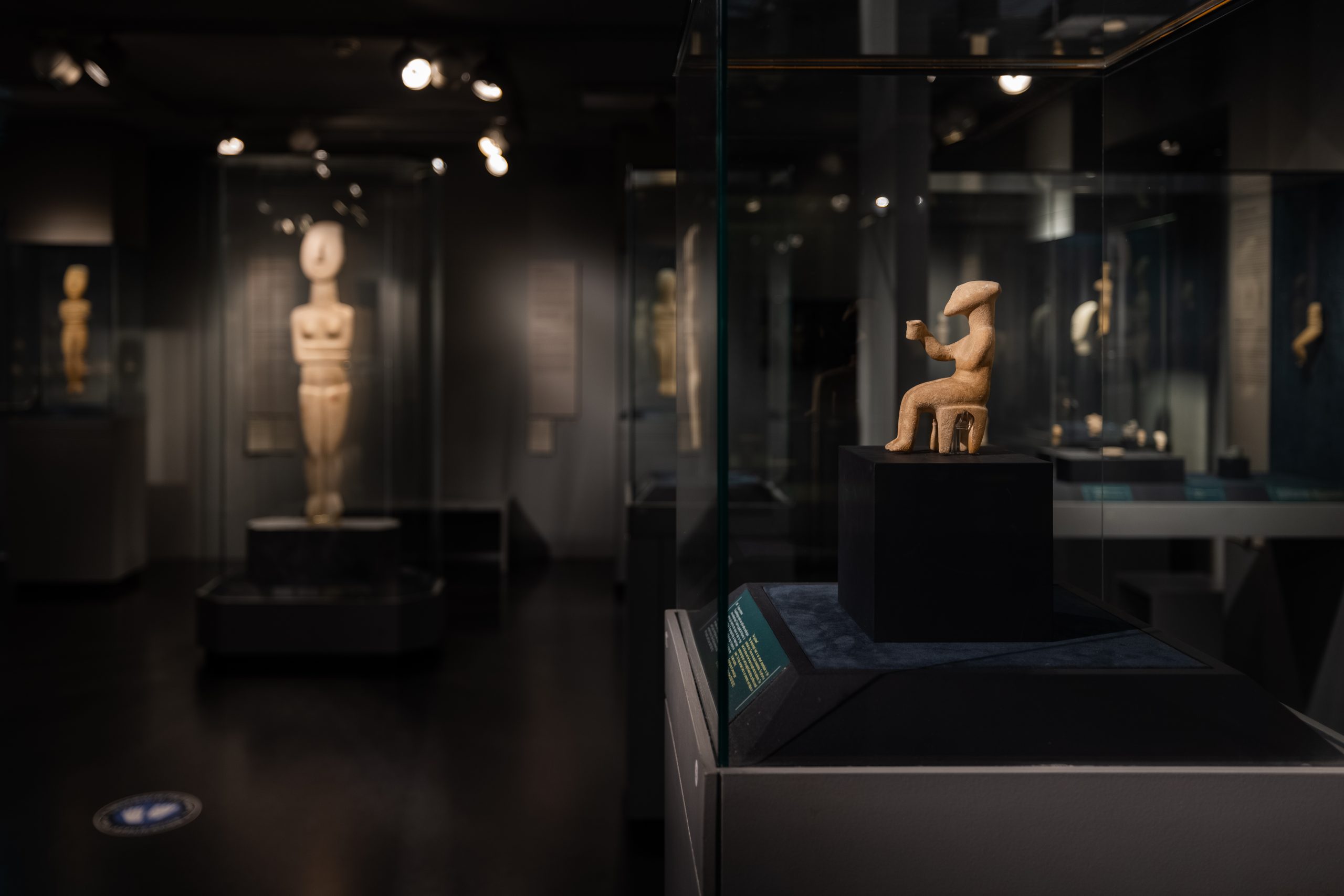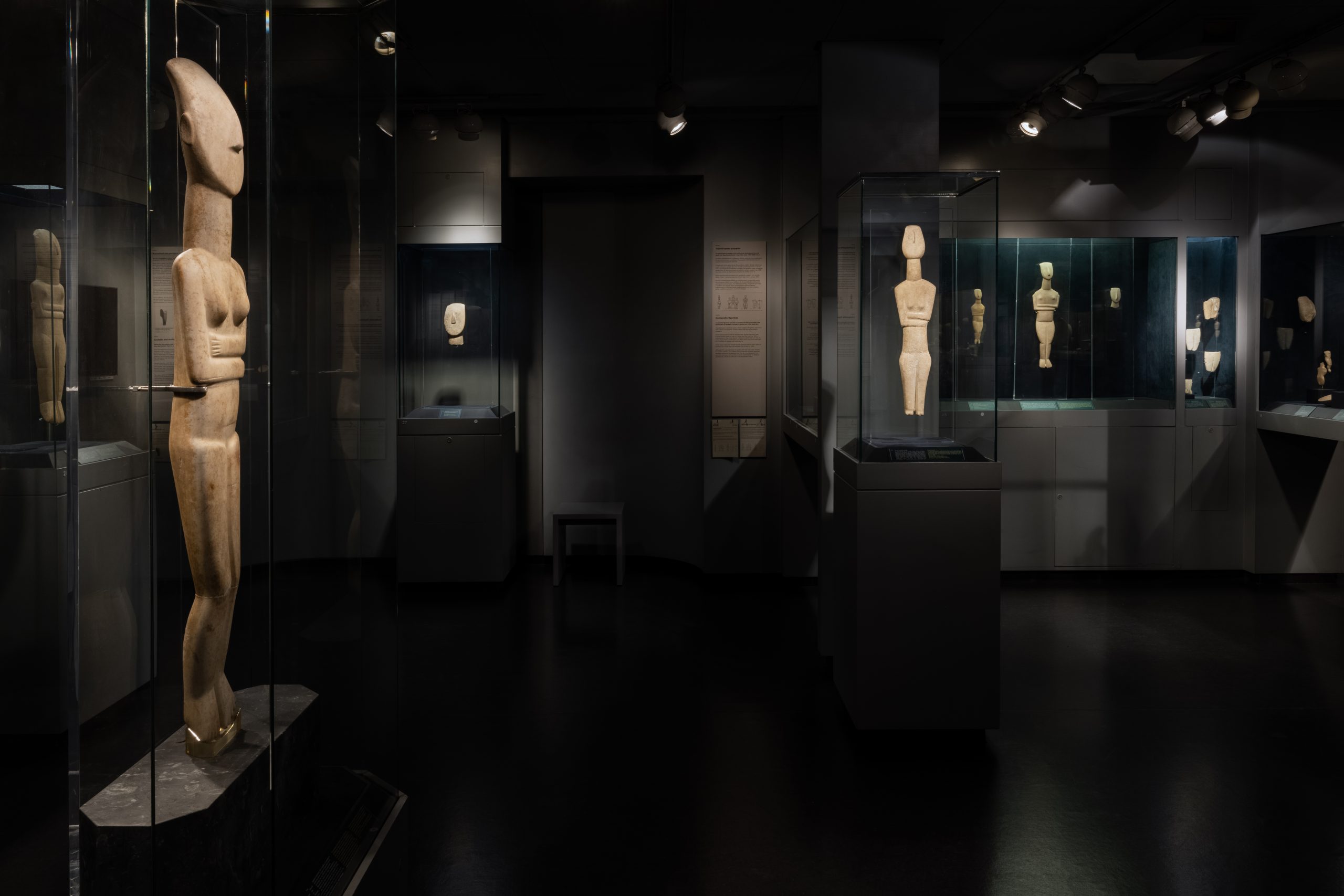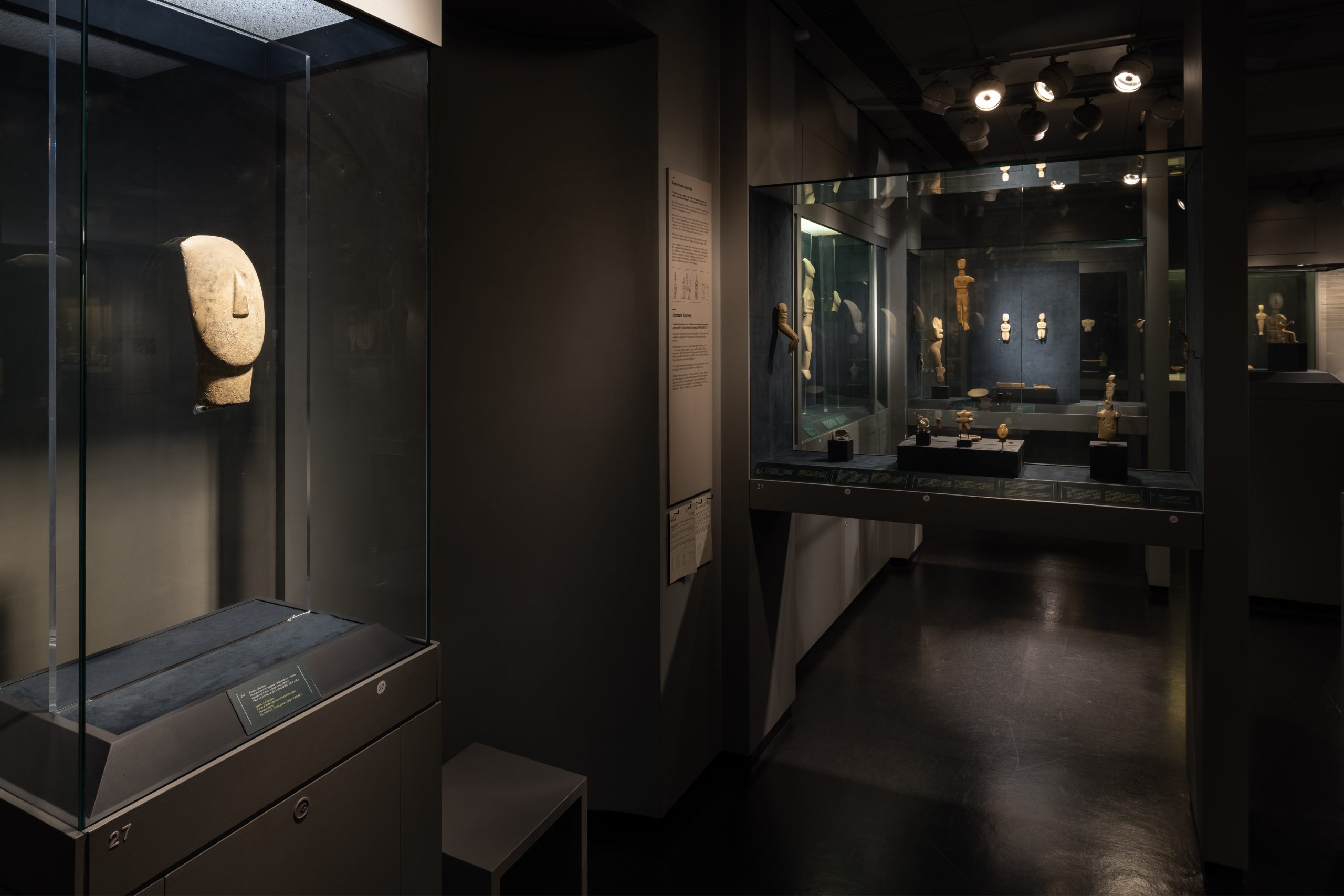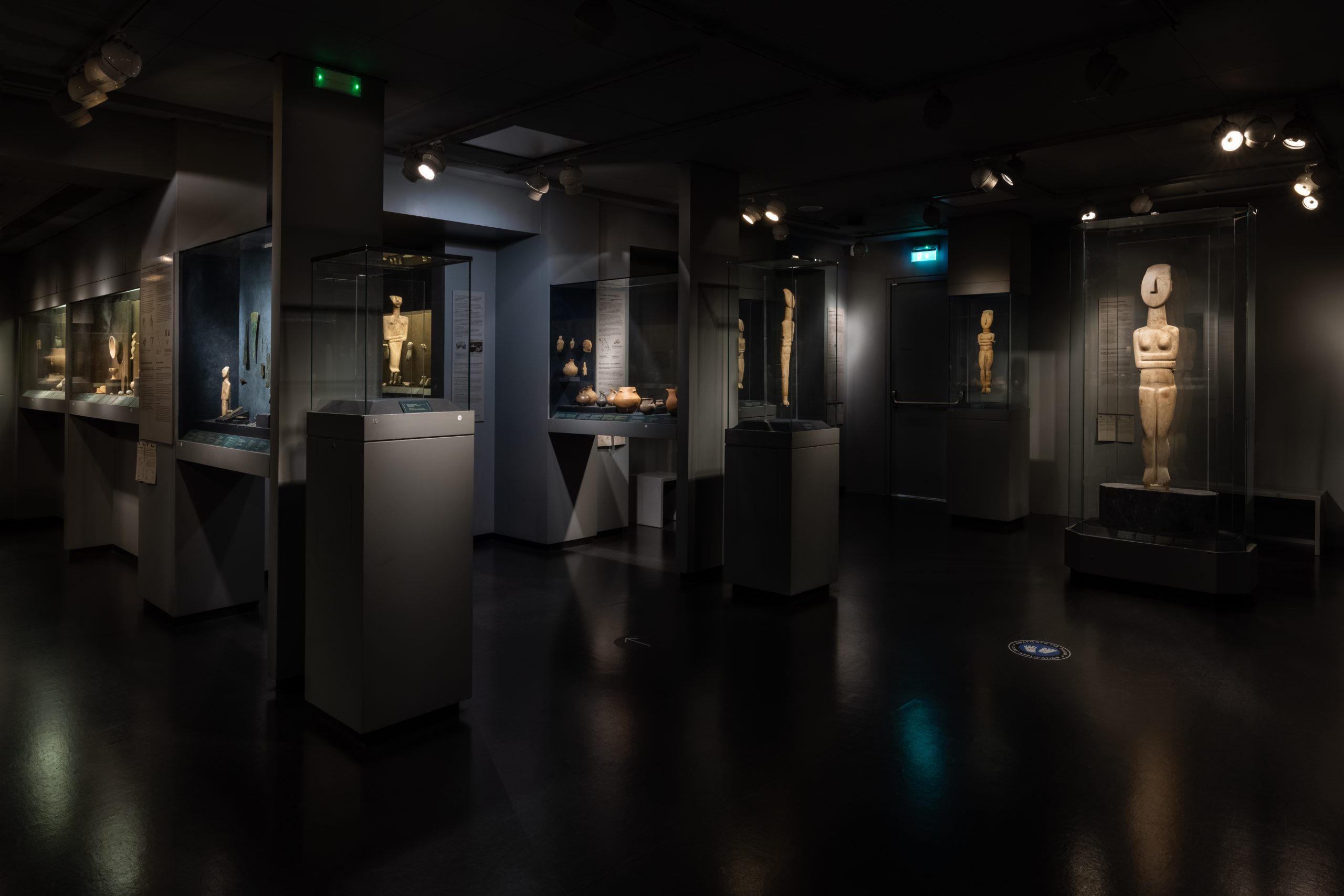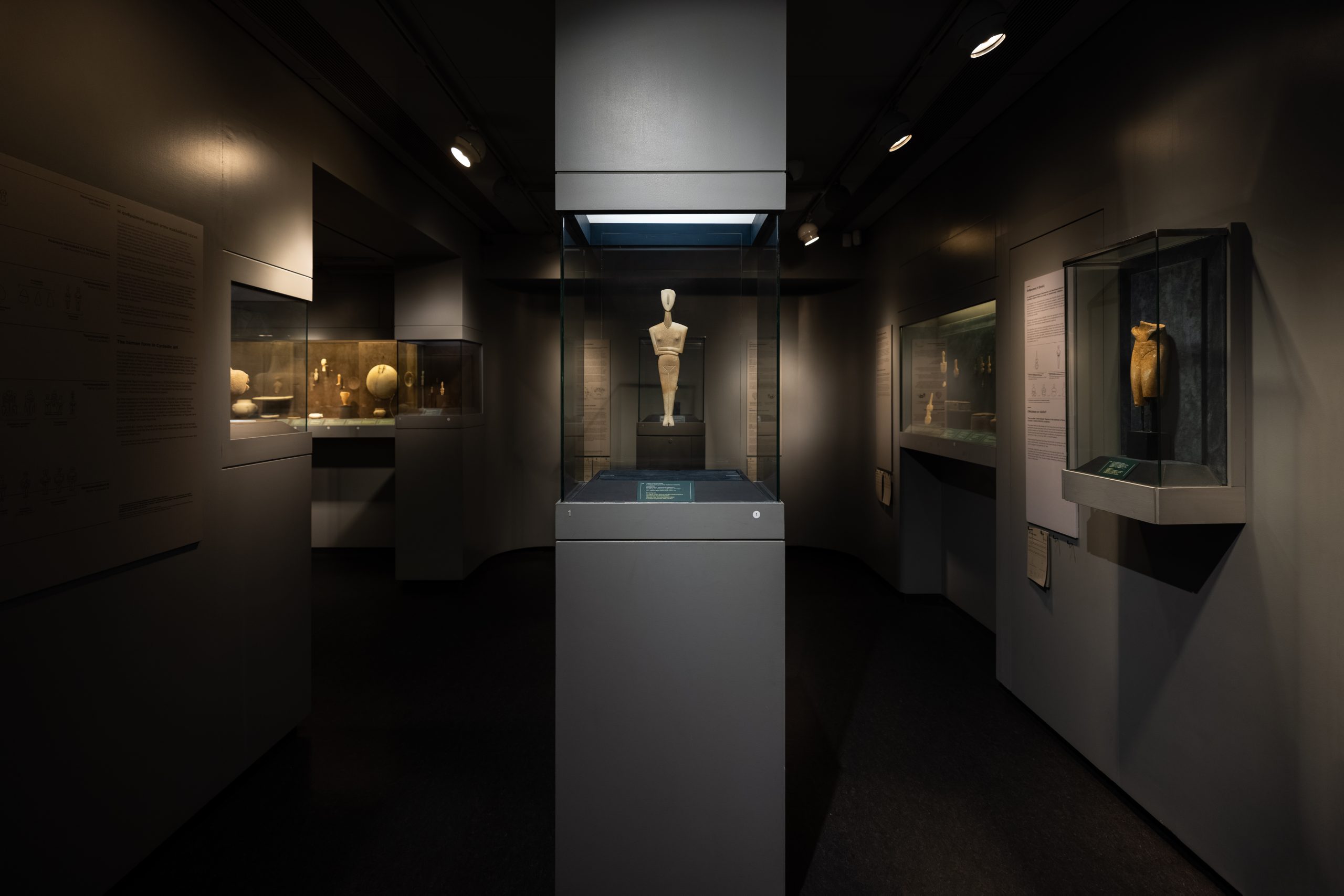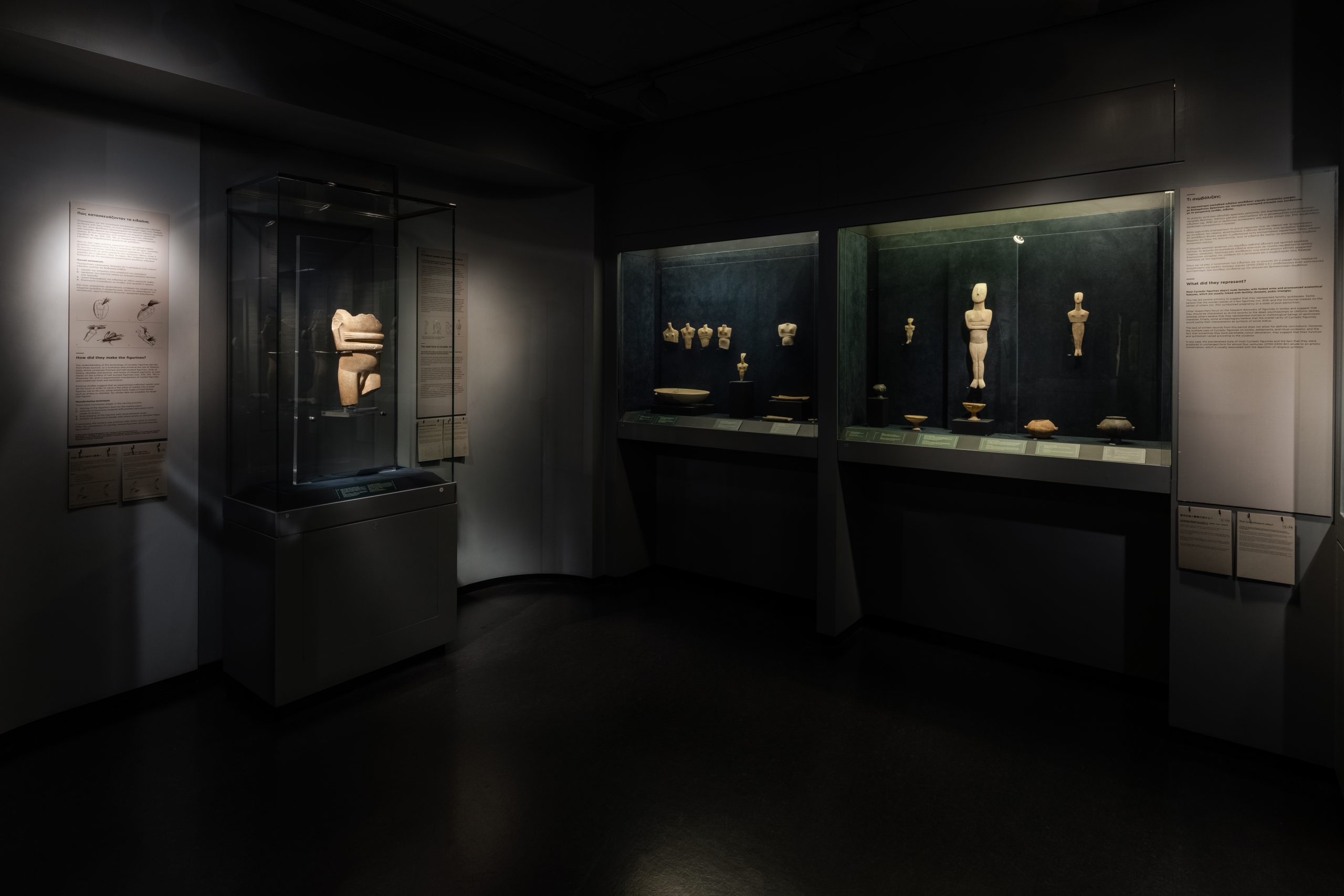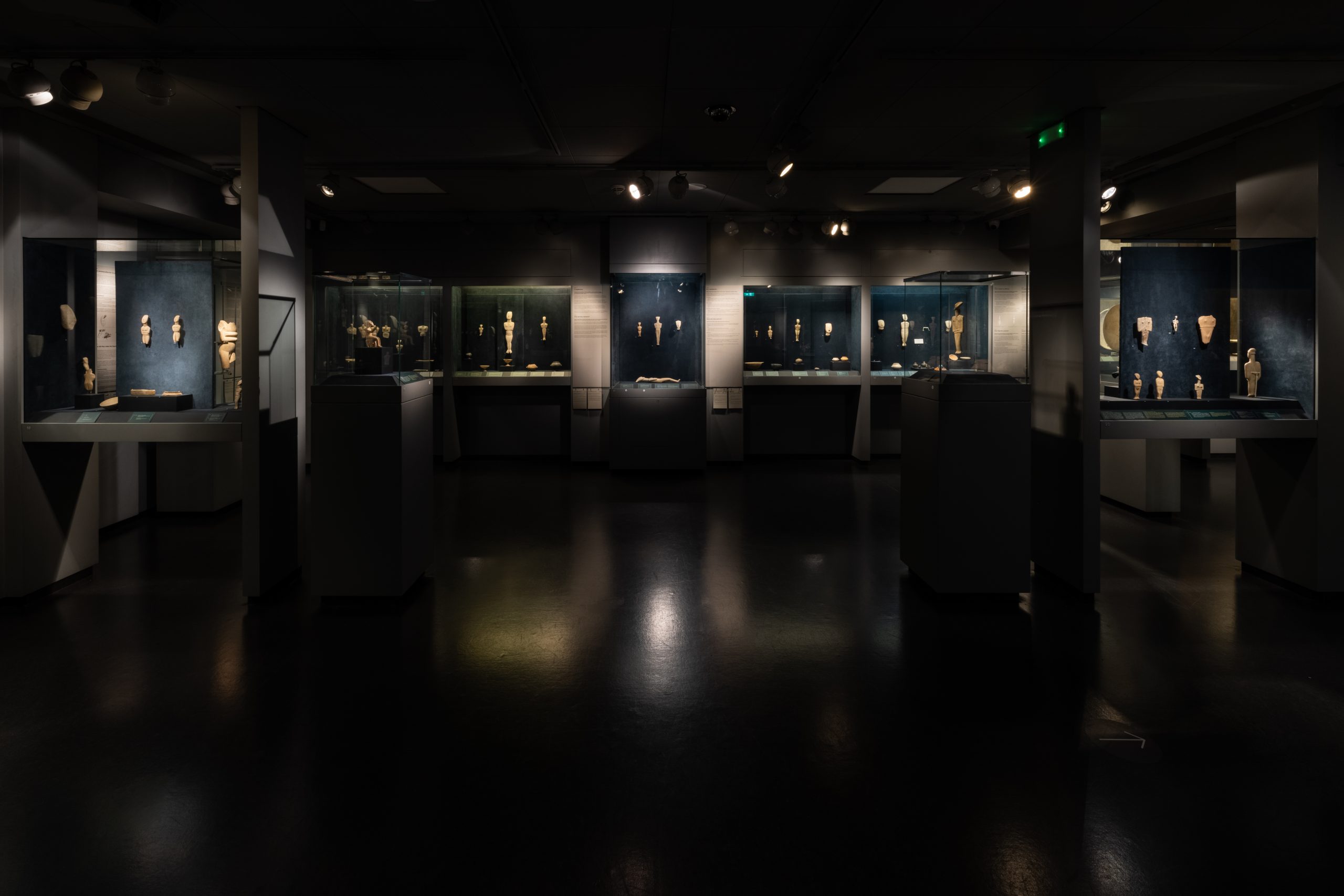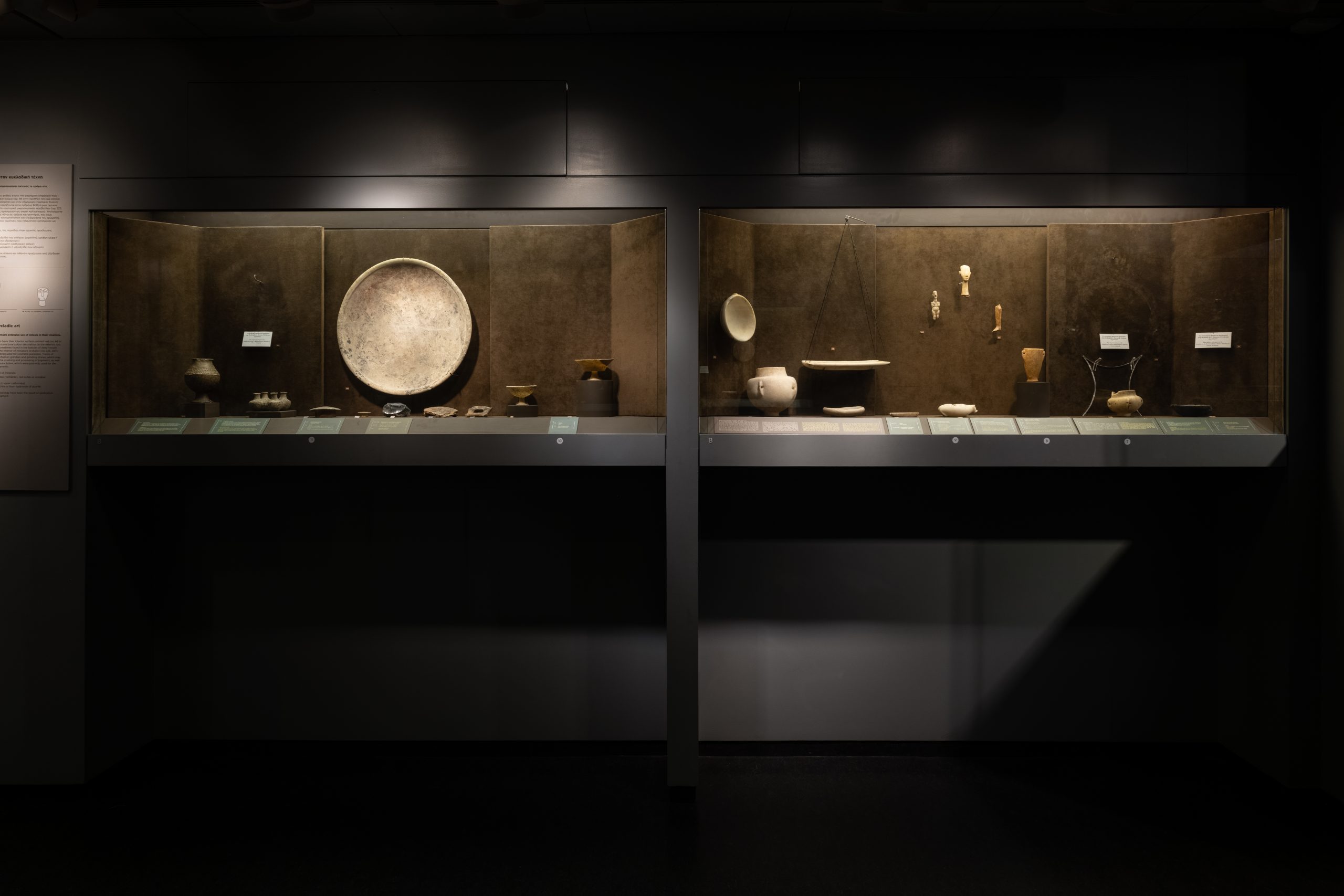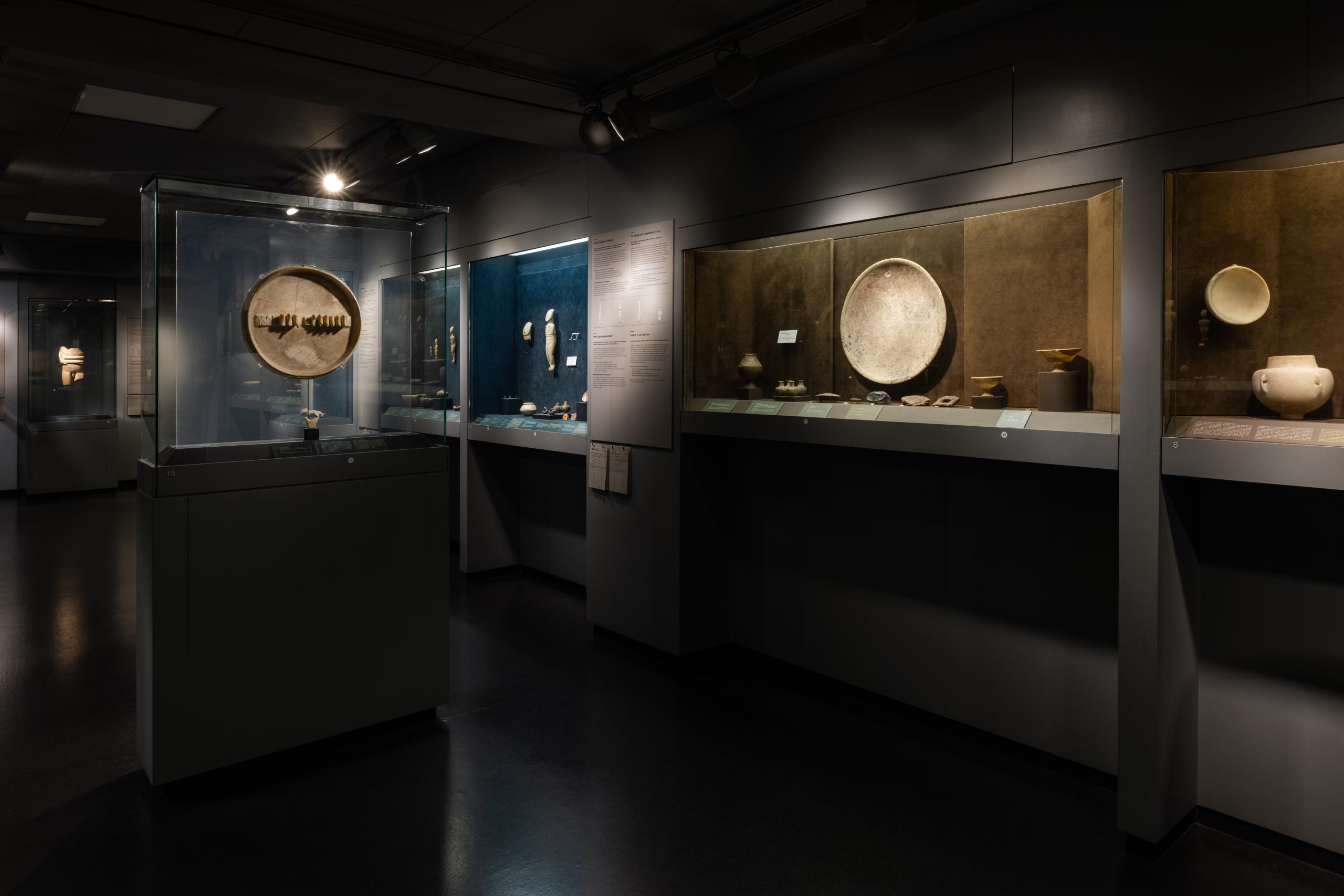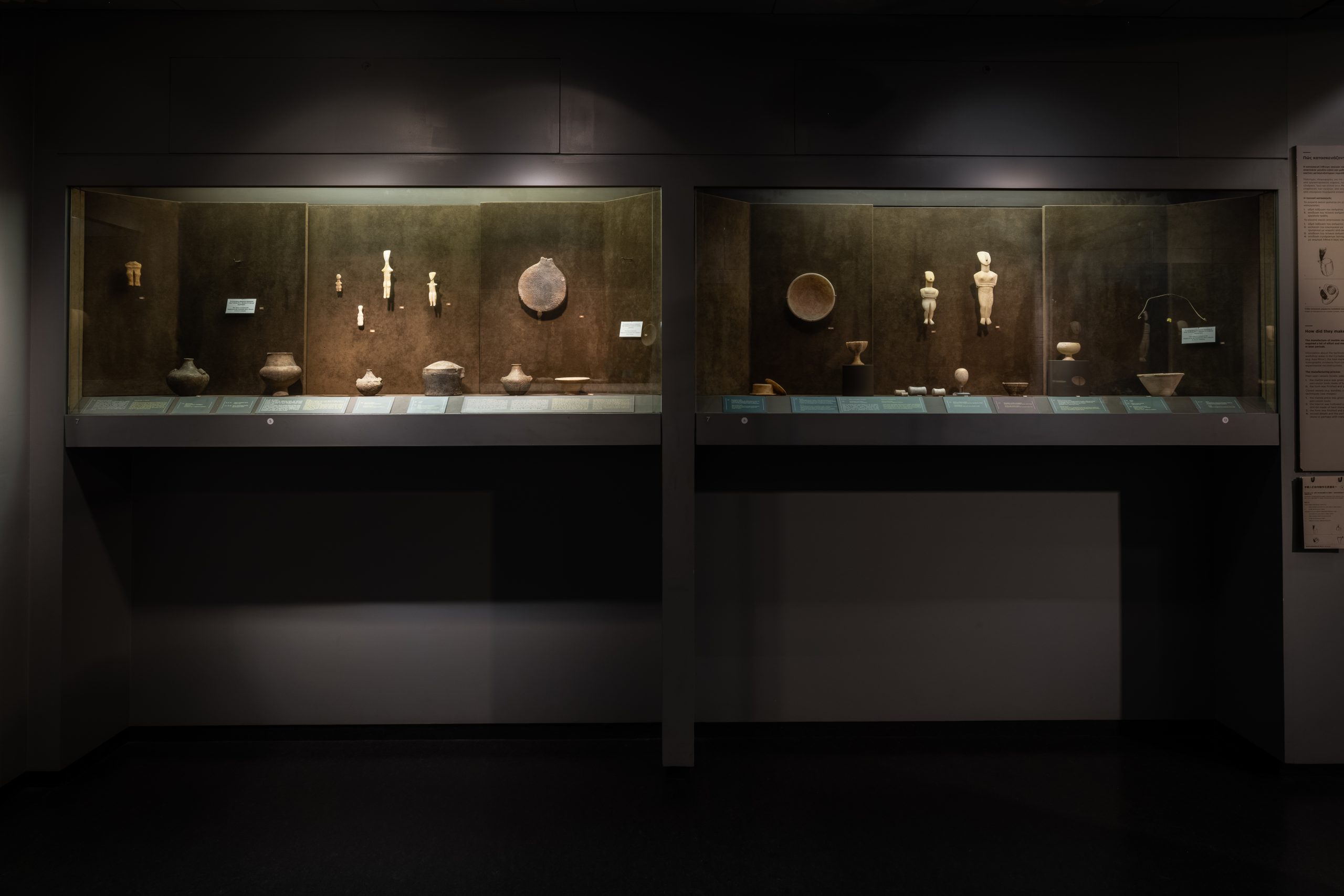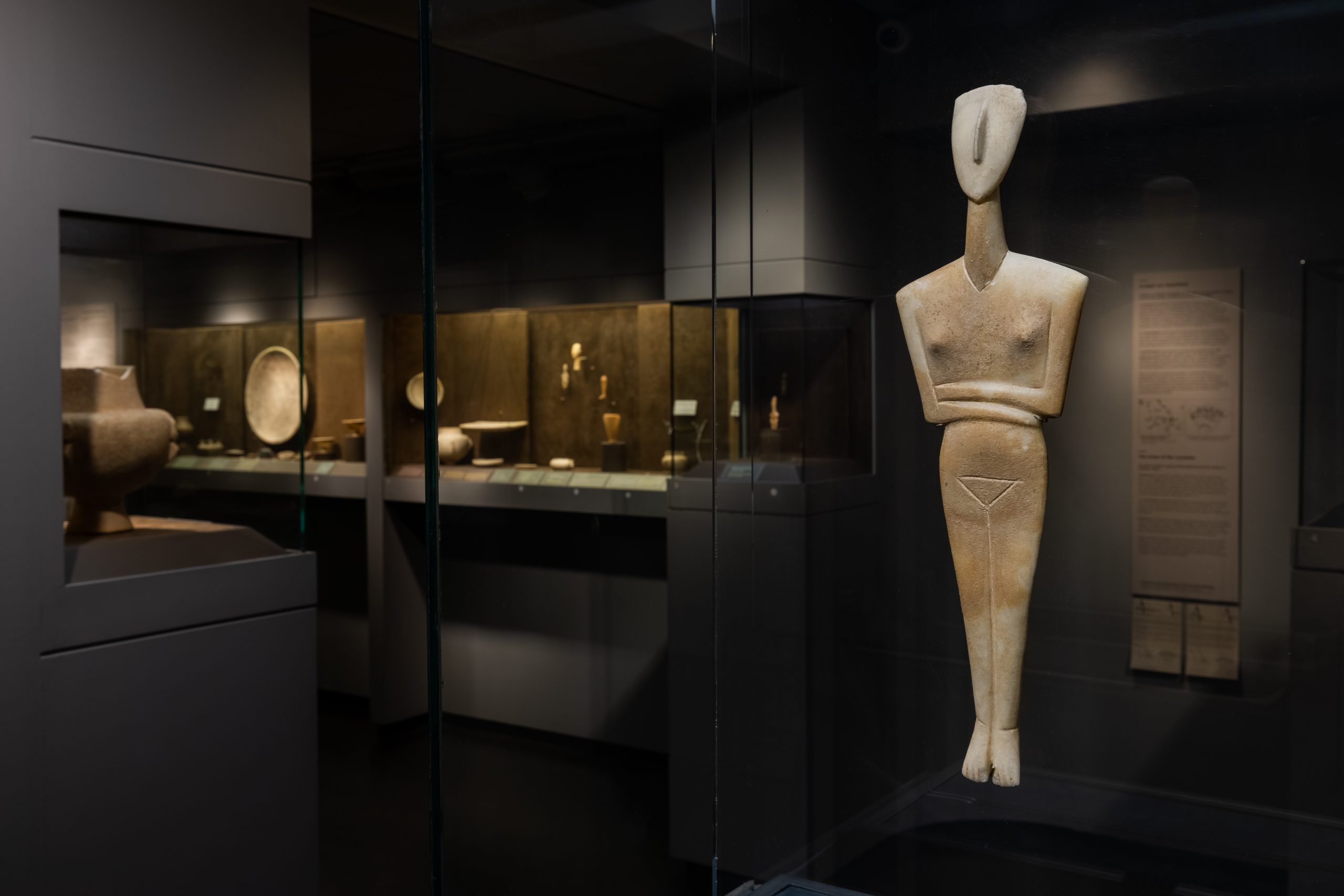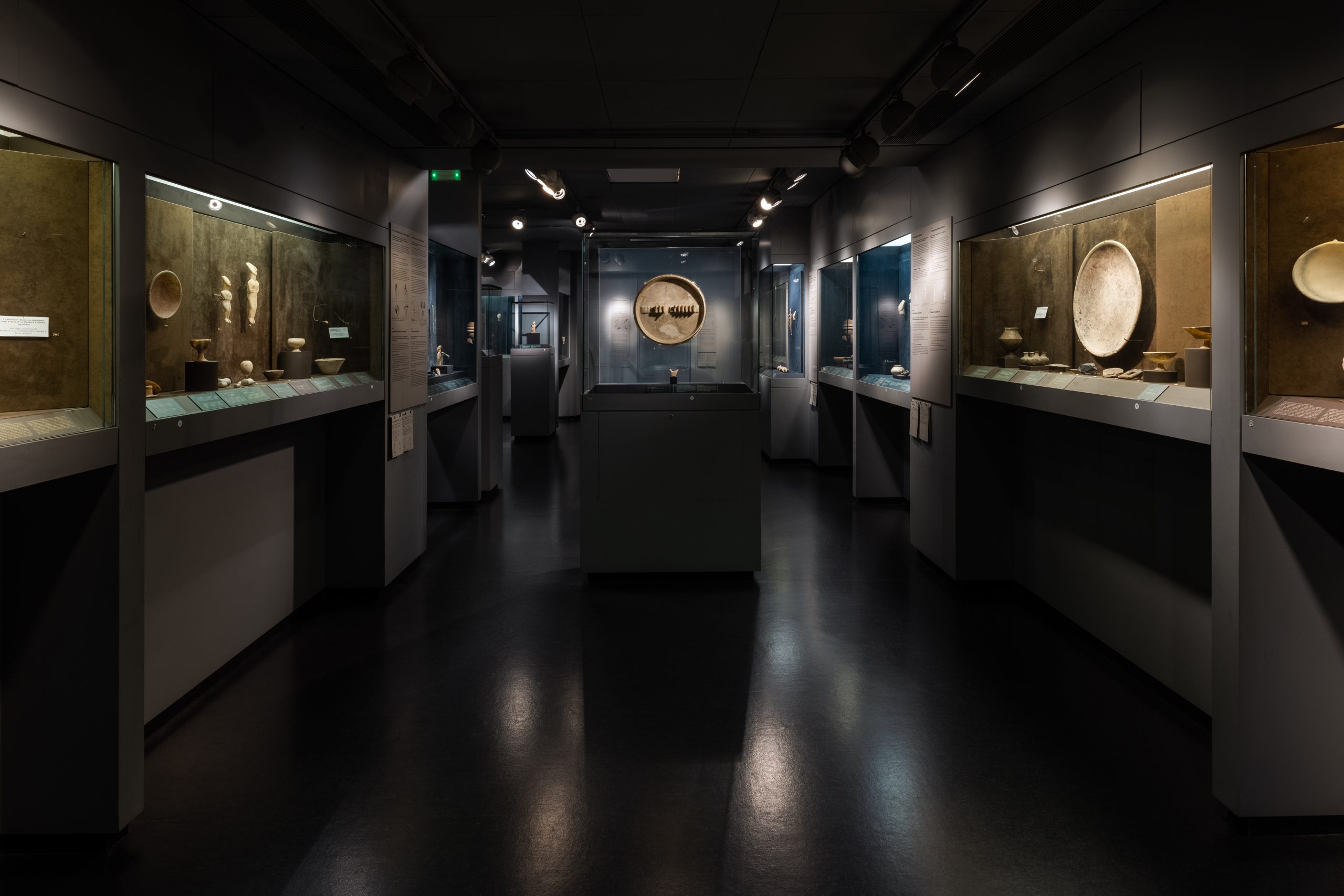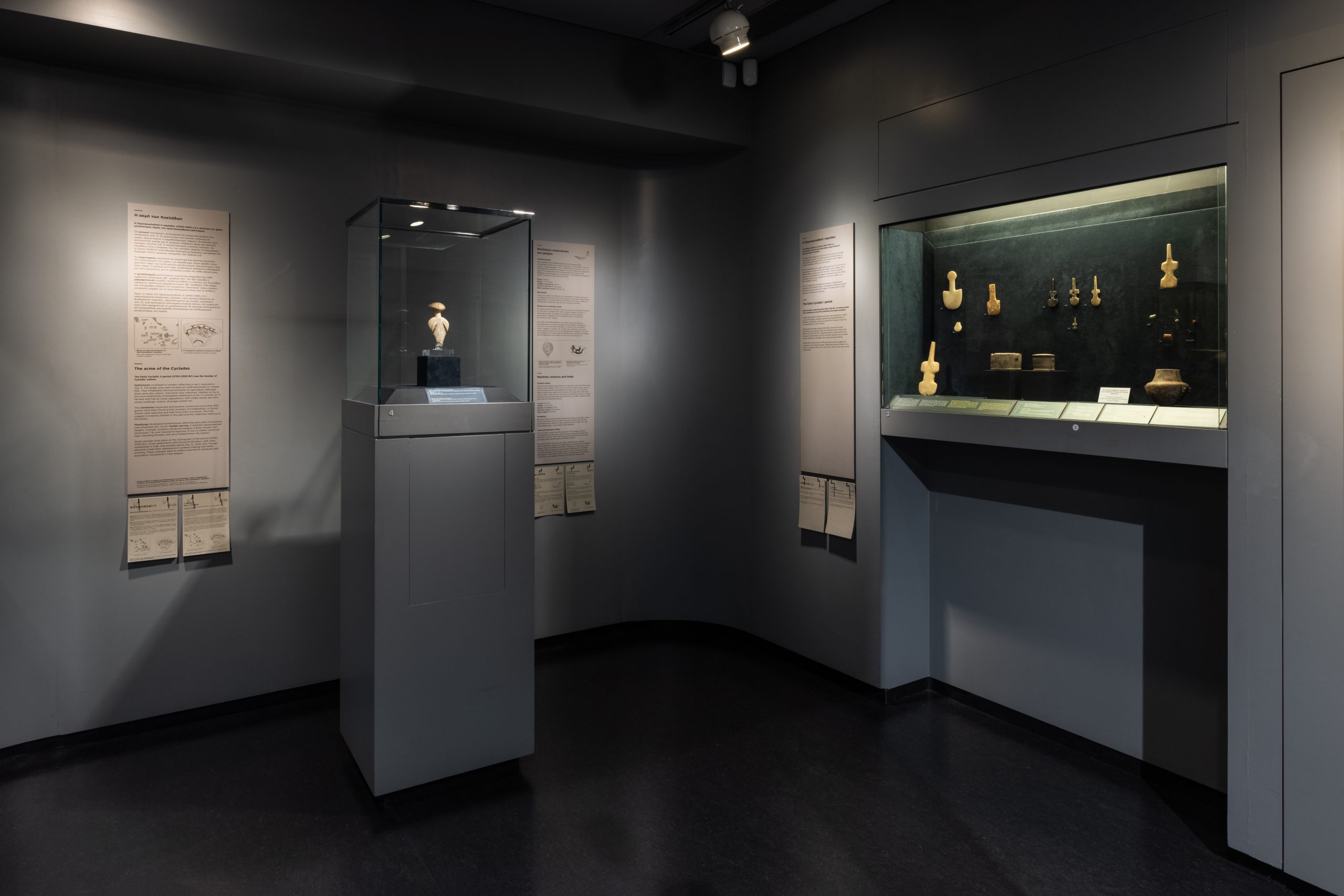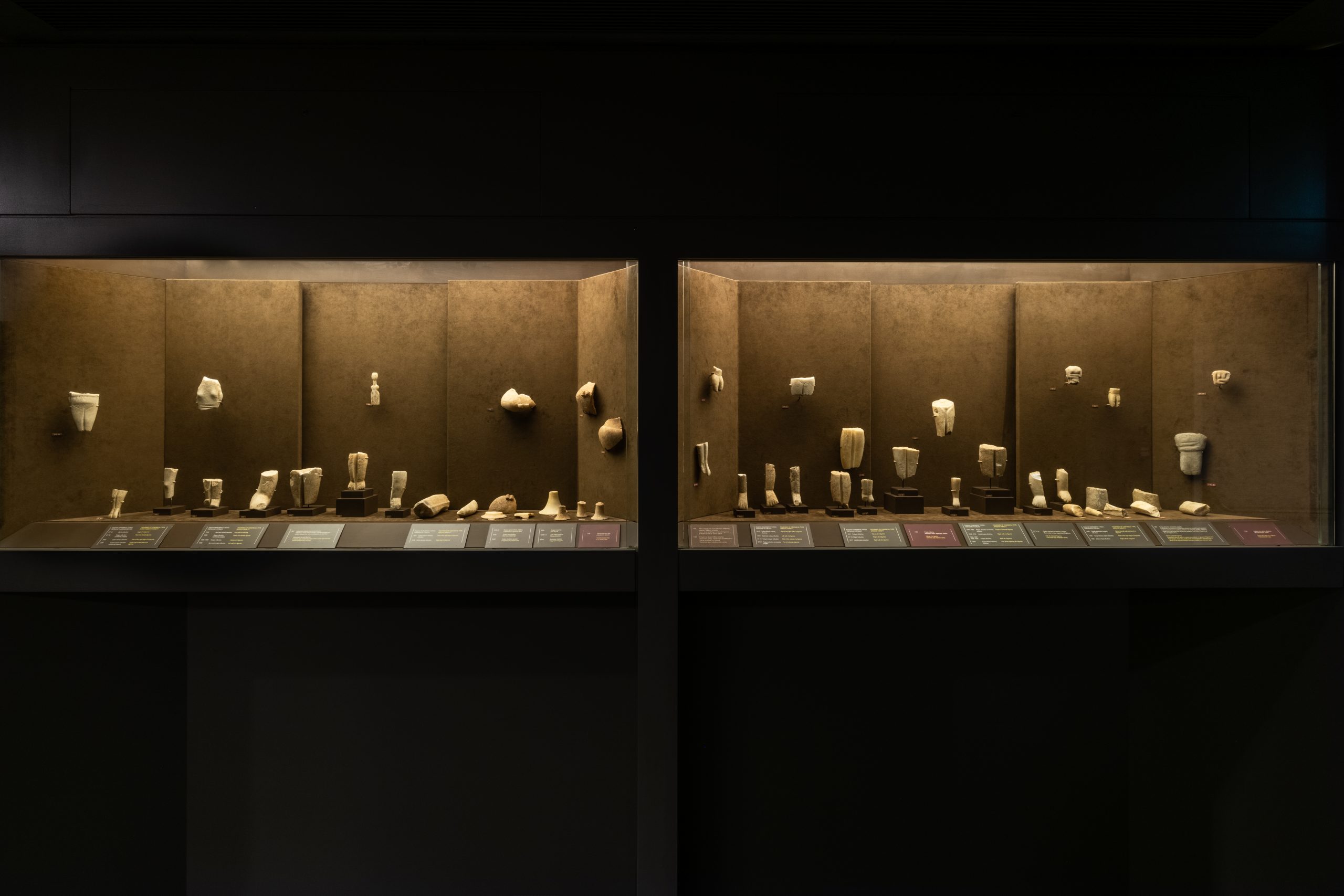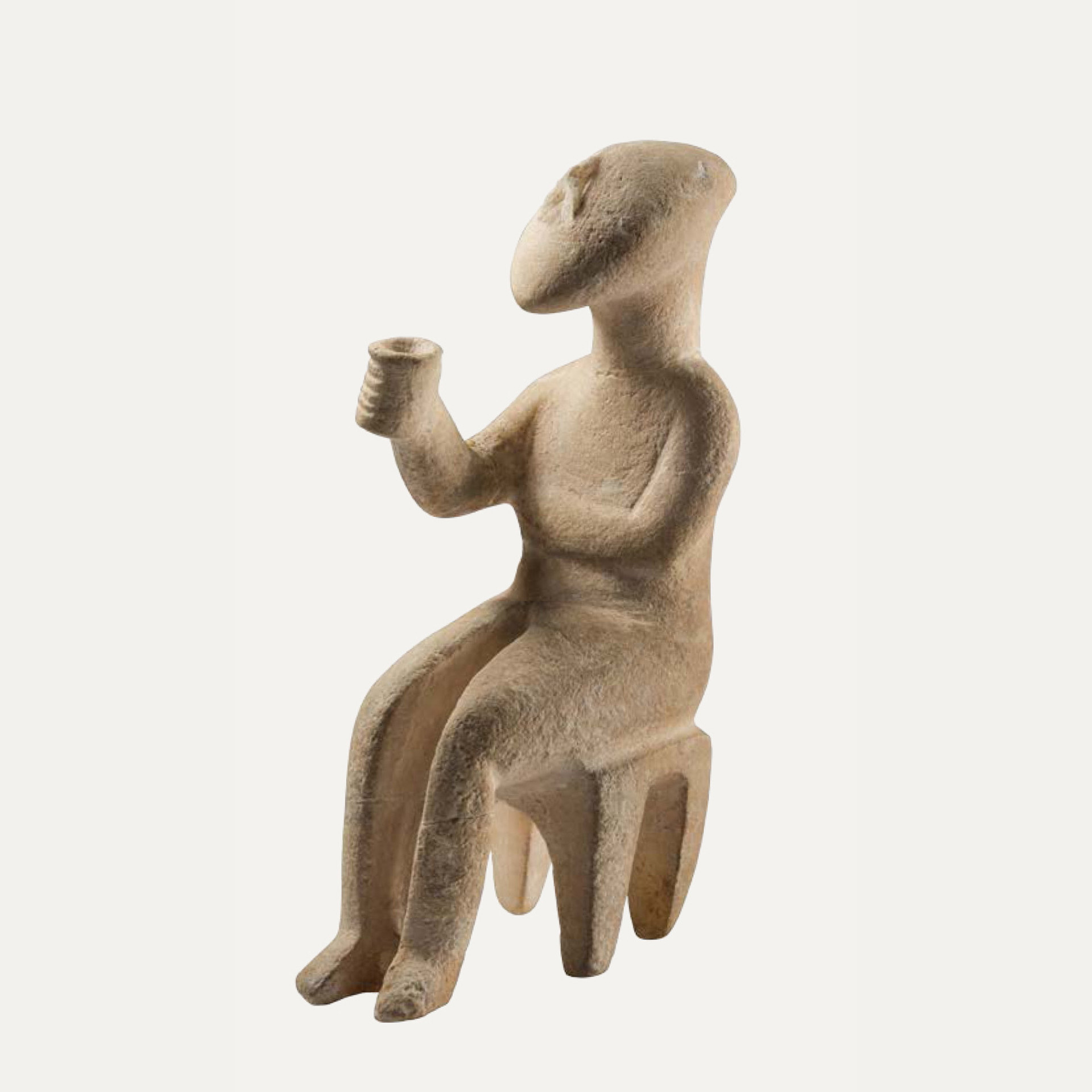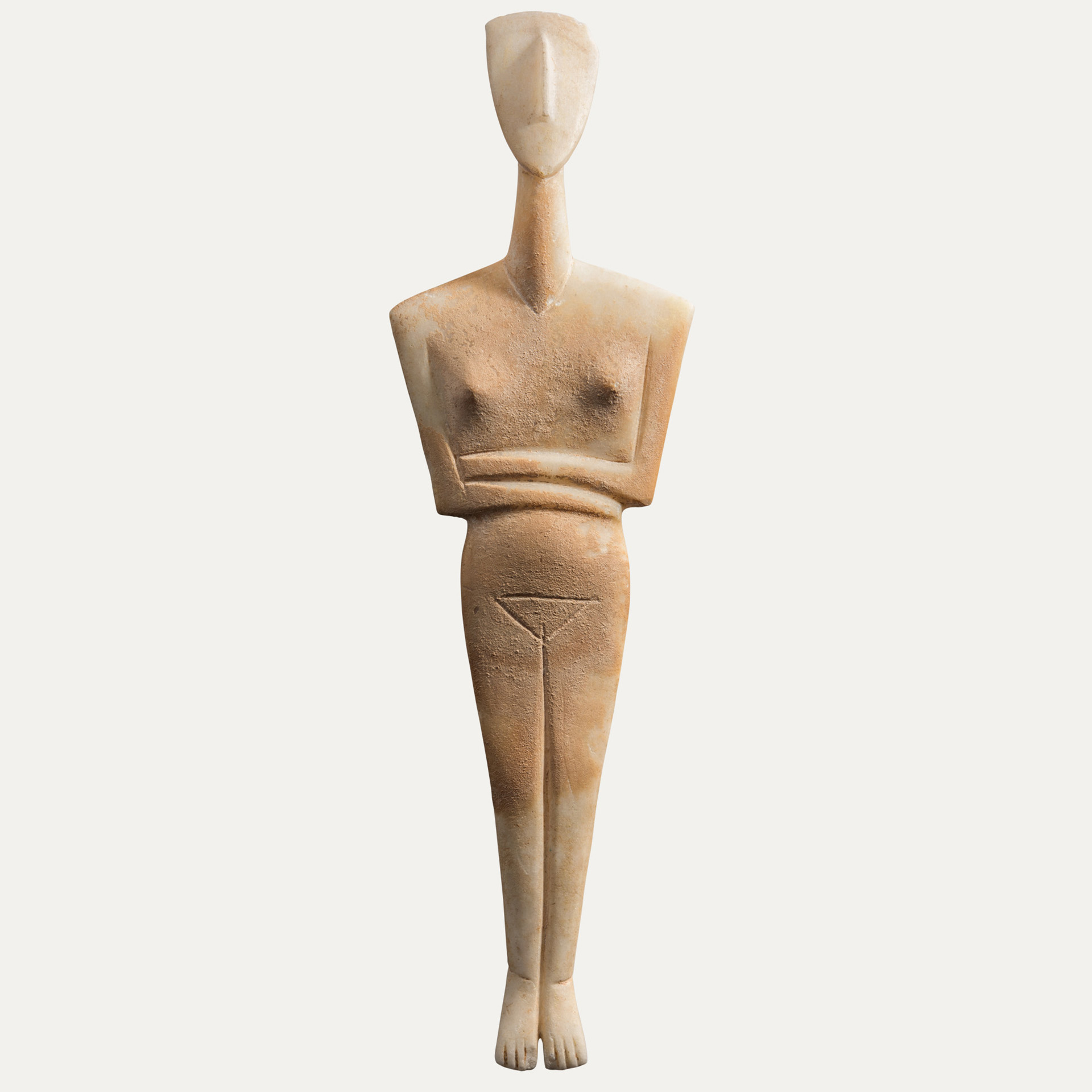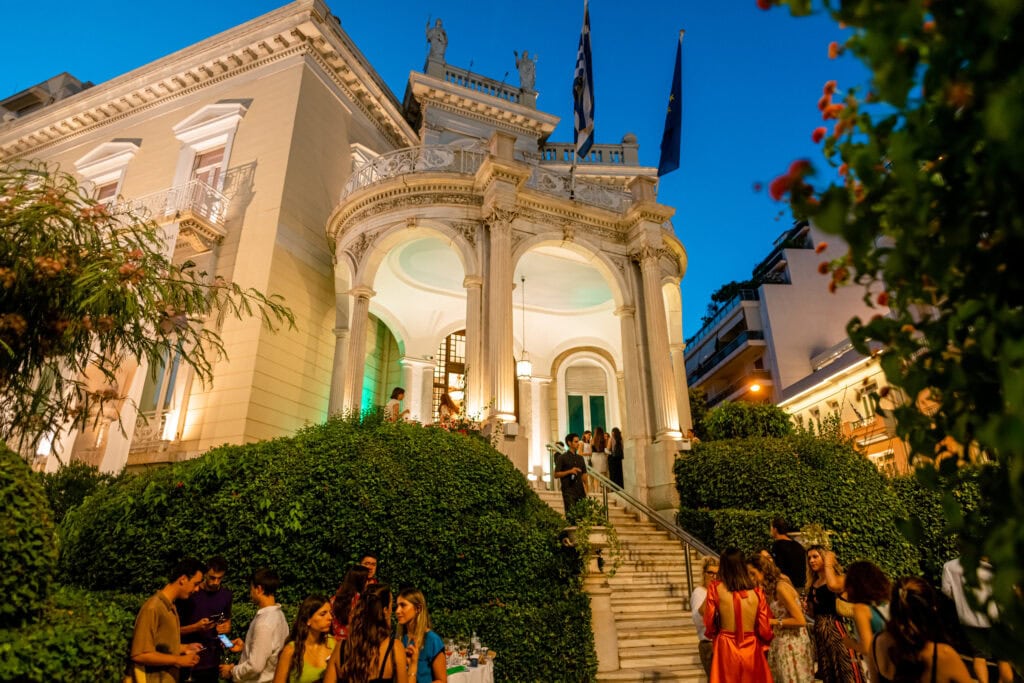Cycladic Art
PERMANENT EXHIBITION
ON VIEW
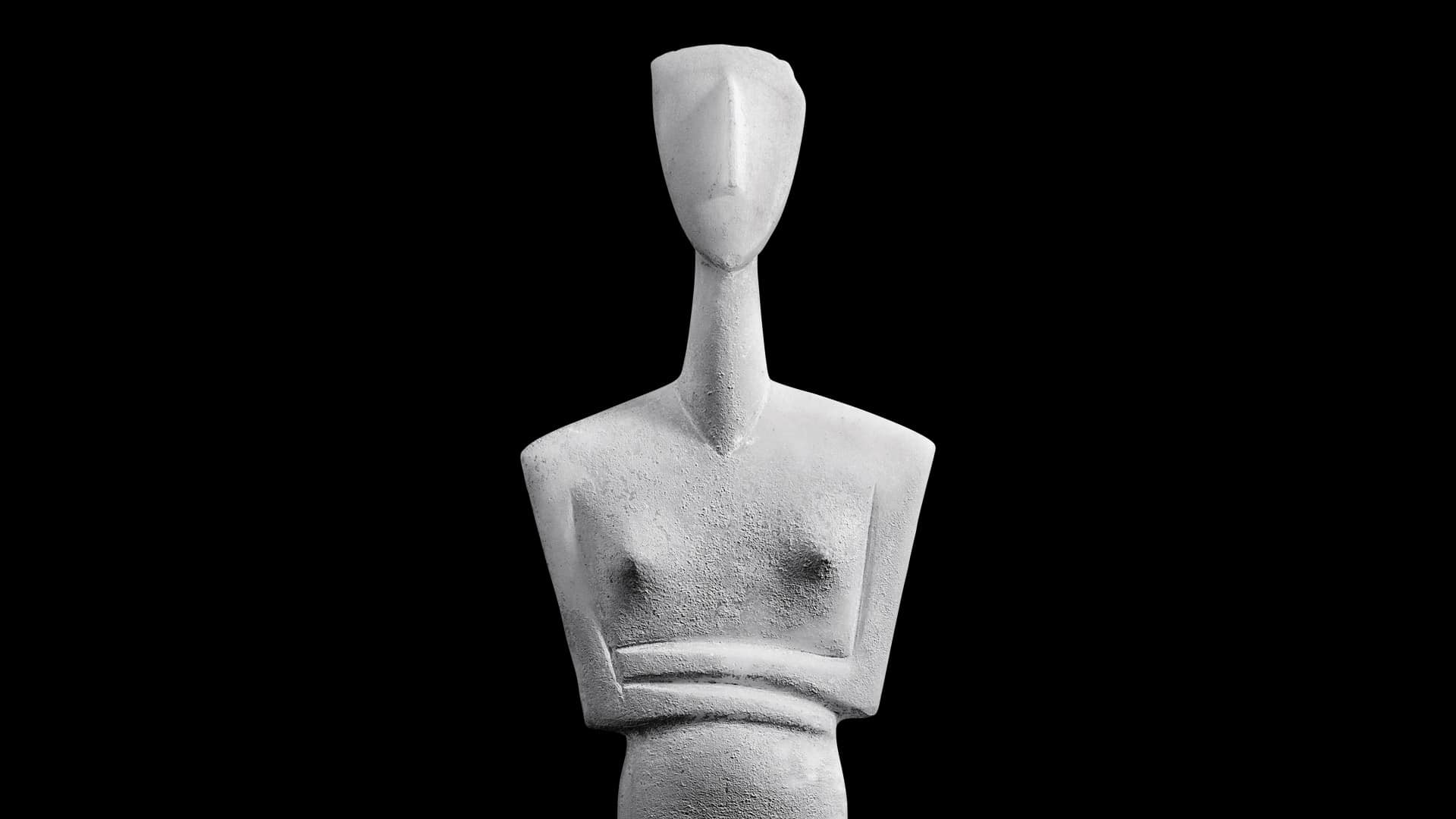
ΤΗΕ ΕΧΗΙΒΙΤΙΟΝ
The Exhibition of Early Cycladic culture is situated on the first floor of the permanent Exhibitions building and opened its doors to the public in 1986. The Early Cycladic culture flourished on the islands of the central and southern Aegean during the 3rd millennium BC. The Cyclades are a group of islands in the southwestern Aegean Sea, which includes about thirty islands and numerous rocky islets. The ancient Greeks called them Cyclades, believing them to be a circle around the sacred island of Delos, where the sanctuary of the god Apollo was located in historical times. Many of the islands are particularly rich in minerals, such as copper and lead ores, silver, emery, obsidian, and marble. Thanks to these abundant resources, the islanders of the time developed trade, metallurgy, and, above all, the art of marble carving.
The Exhibition includes a large number of Cycladic objects of high art and aesthetics, with marble anthropomorphic figurines as the protagonists. Looking at the material, it is evident that these are the creations of a civilization that placed human beings at its center. Most of the Early Cycladic figurines represent naked female figures, initially schematized, later more naturalistic, and sometimes with natural proportions and more idealized features. Elaborate marble vases are also displayed, a testimony to the skill and ability of the Cycladic craftsmen. Bronze tools and weapons, such as chisels and daggers, mark the systematic use of metals and the beginning of a new era that radically changed the way of life for the inhabitants in the archipelago. Clay vessels for everyday use as well as objects with strong symbolism frame the Exhibition and provide a comprehensive picture of life in the island societies of the Aegean during the 3rd millennium BC.
The unique group referred to as the “Keros Hoard” is presented as a separate section. This set of artifacts mainly includes fragments of marble figurines and vases, which were deliberately fragmented in antiquity in the context of specific rituals that took place on the island of Keros, hence the group’s name.
PLAN YOUR VISIT
Dates
Open daily except Tuesdays and Public Holidays
Venue
4 Neofytou Douka st.
* Entrance from Stathatos Mansion
Tickets
Discounted admission: €12
Cycladic Friends: Free admission
*Includes entrance to the “Marlene Dumas: Cycladic Blues” exhibition.
Permanent Exhibitions
General admission: €12
Discounted admission: €9
Cycladic Friends: Free admission
IN THE GALLERY
ARTWORKS
STORIES
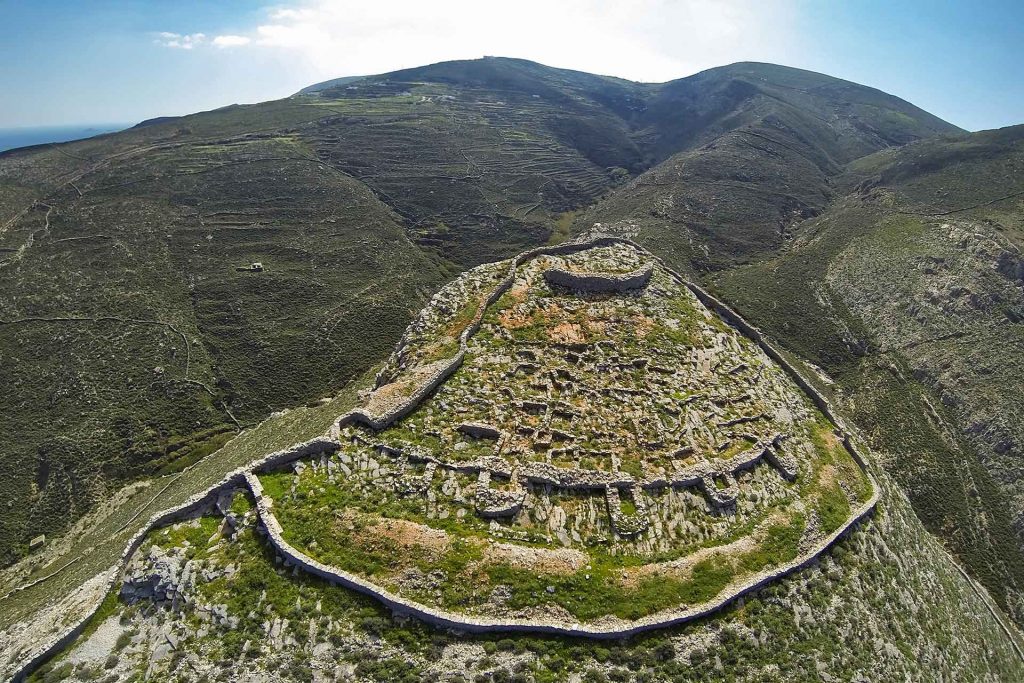
CYCLADIC ART
Settlements of the Cyclades in the 3rd millenium BC
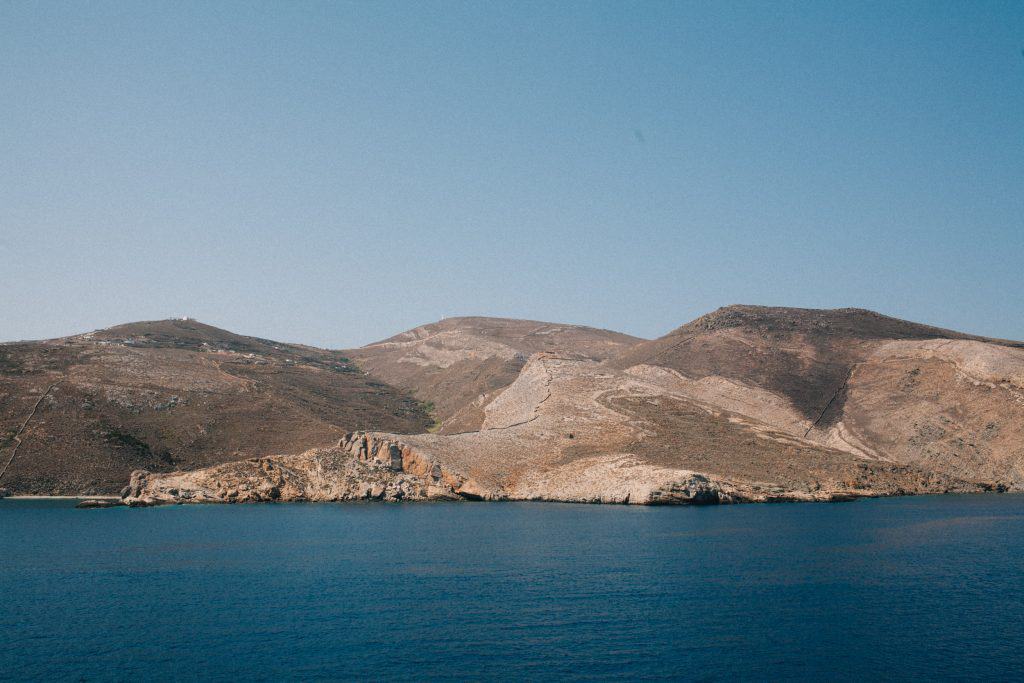
CYCLADIC ART
Geography of the Cyclades
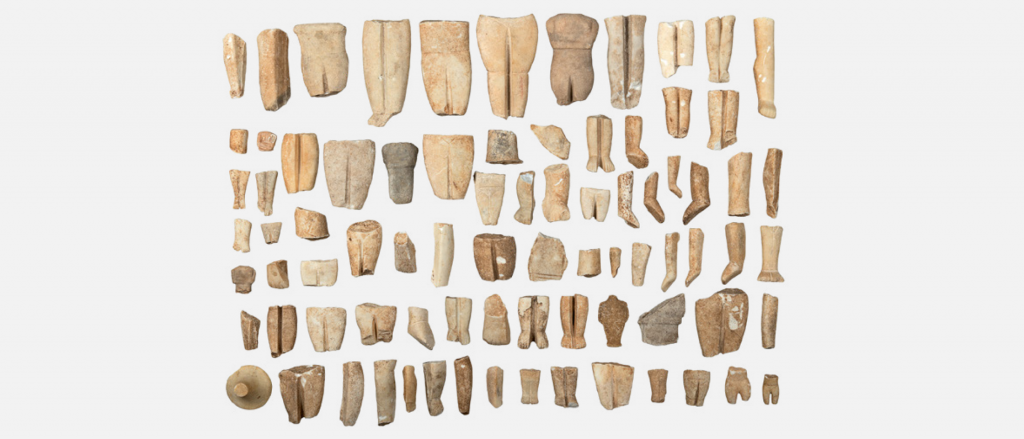
CYCLADIC ART
“Keros Hoard”
CYCLADIC FRIENDS
BE
FRIENDS
